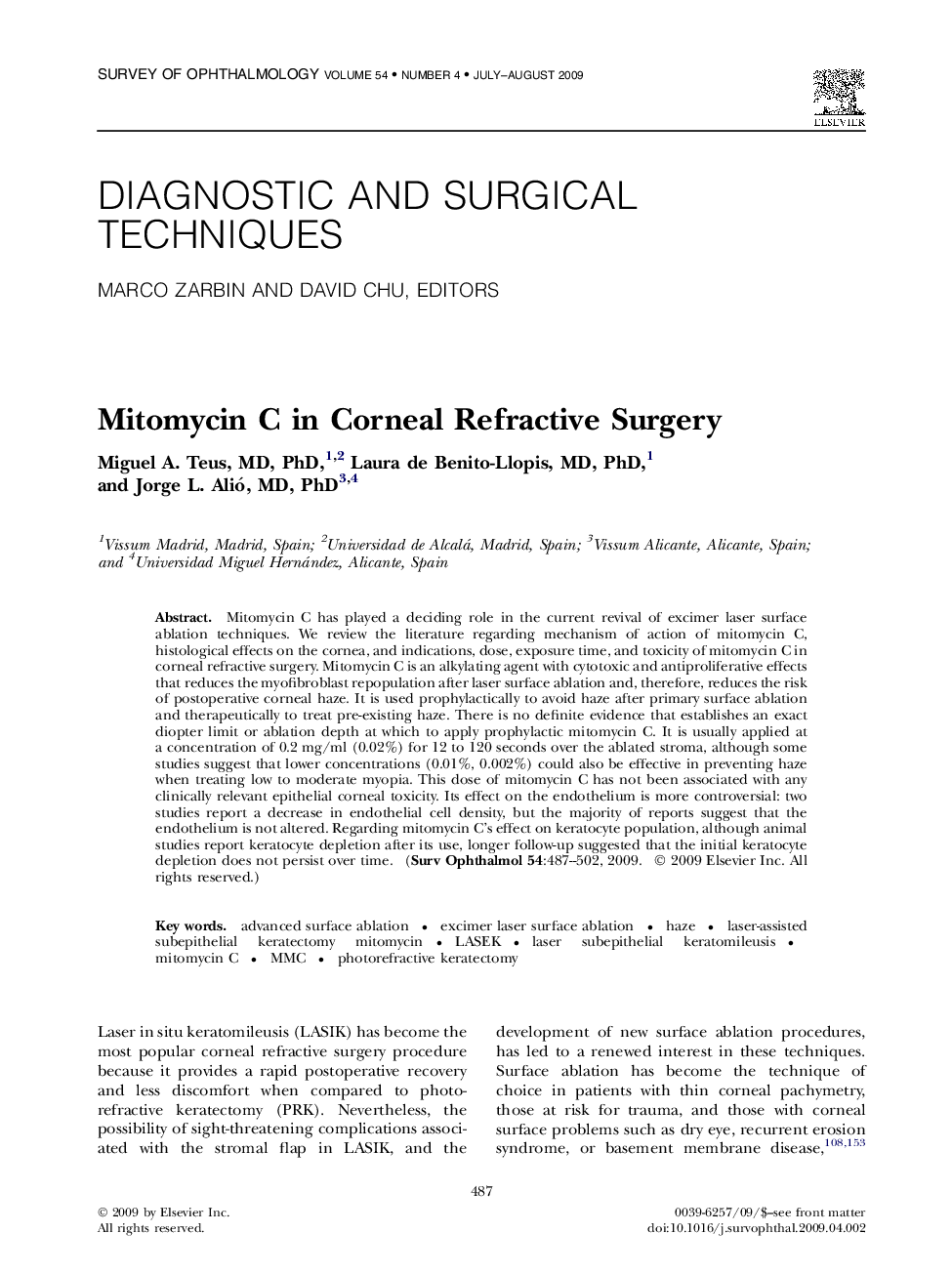| Article ID | Journal | Published Year | Pages | File Type |
|---|---|---|---|---|
| 4032993 | Survey of Ophthalmology | 2009 | 16 Pages |
Mitomycin C has played a deciding role in the current revival of excimer laser surface ablation techniques. We review the literature regarding mechanism of action of mitomycin C, histological effects on the cornea, and indications, dose, exposure time, and toxicity of mitomycin C in corneal refractive surgery. Mitomycin C is an alkylating agent with cytotoxic and antiproliferative effects that reduces the myofibroblast repopulation after laser surface ablation and, therefore, reduces the risk of postoperative corneal haze. It is used prophylactically to avoid haze after primary surface ablation and therapeutically to treat pre-existing haze. There is no definite evidence that establishes an exact diopter limit or ablation depth at which to apply prophylactic mitomycin C. It is usually applied at a concentration of 0.2 mg/ml (0.02%) for 12 to 120 seconds over the ablated stroma, although some studies suggest that lower concentrations (0.01%, 0.002%) could also be effective in preventing haze when treating low to moderate myopia. This dose of mitomycin C has not been associated with any clinically relevant epithelial corneal toxicity. Its effect on the endothelium is more controversial: two studies report a decrease in endothelial cell density, but the majority of reports suggest that the endothelium is not altered. Regarding mitomycin C's effect on keratocyte population, although animal studies report keratocyte depletion after its use, longer follow-up suggested that the initial keratocyte depletion does not persist over time.
